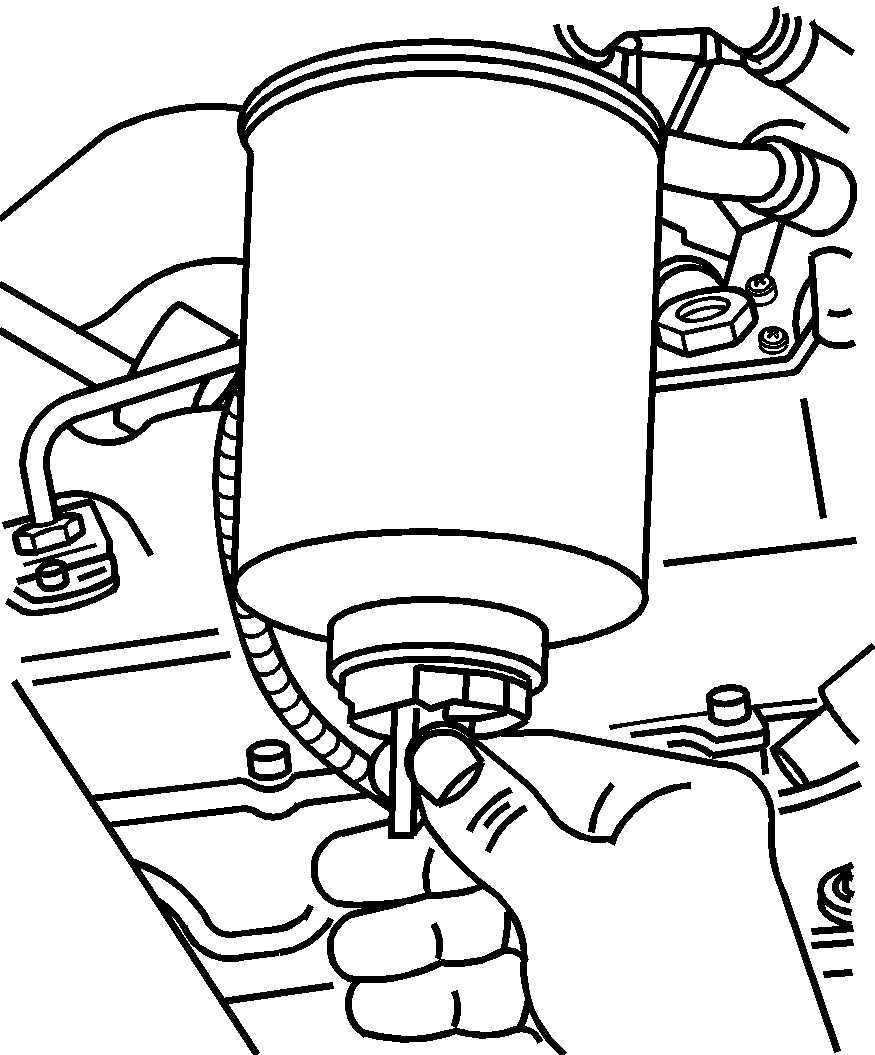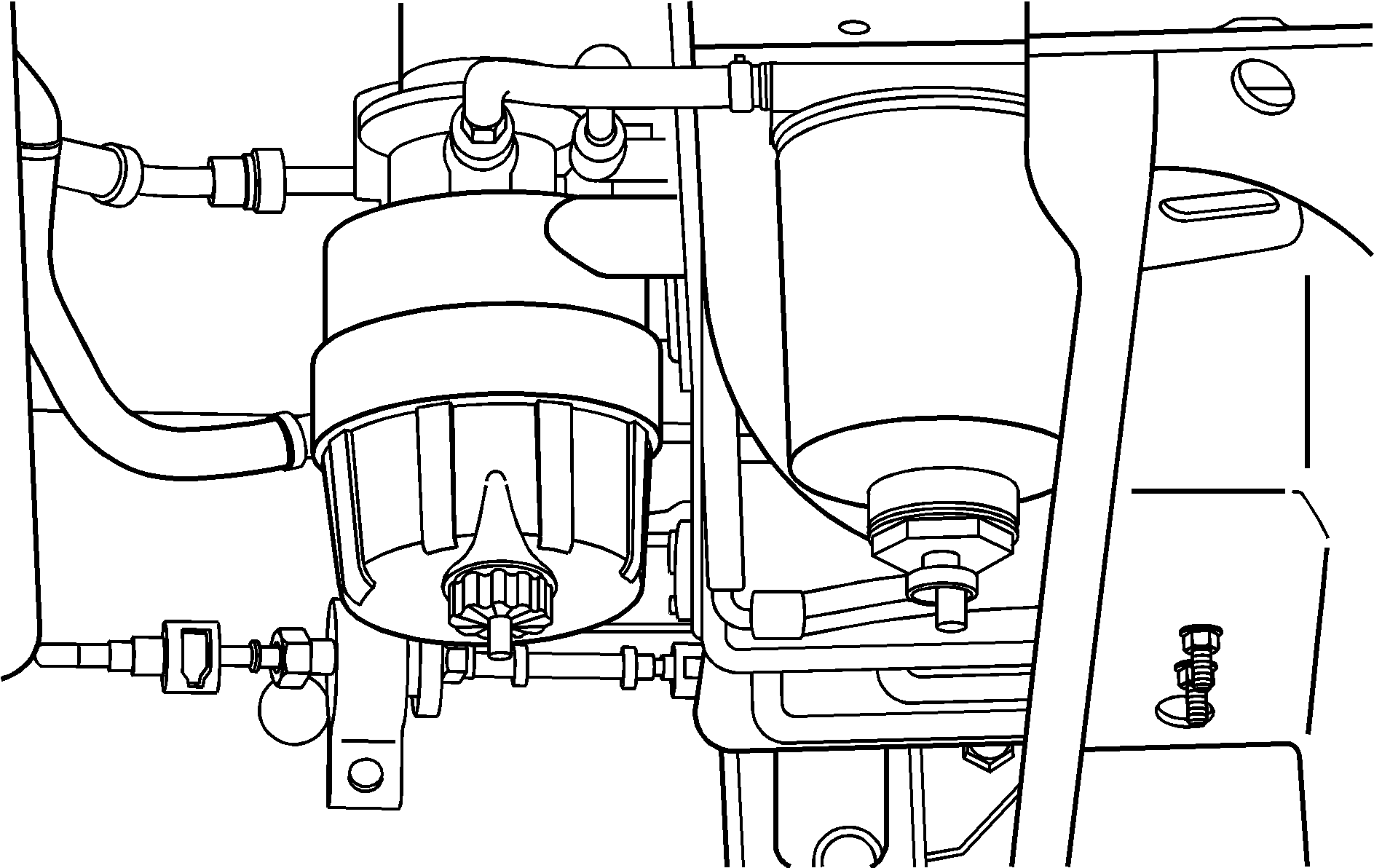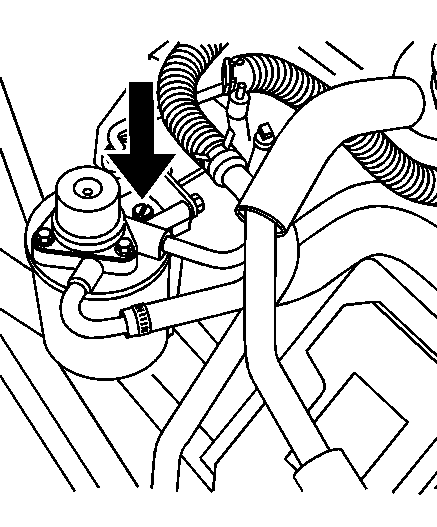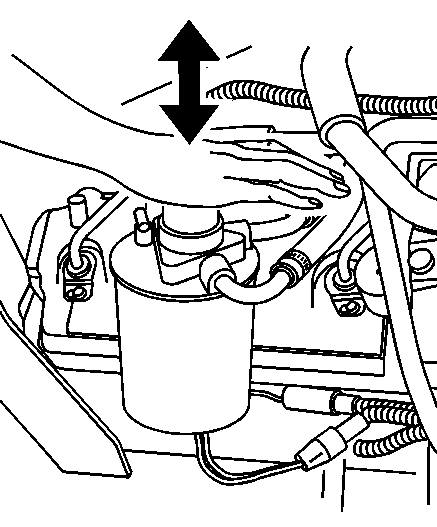If the WATER IN FUEL DIC message or water in fuel warning light comes on, use this chart.
Problem | Recommended Action | ||
|---|---|---|---|
Light/Message comes on intermittently. | Drain water from fuel filter. When there is no more water, recheck the light/message on the next ignition cycle. If the light/message stays on with no water in the fuel, take the vehicle in for service. | ||
Light/Message stays on: | |||
| Drain fuel filter immediately. If no water can be drained and light stays on, see your dealer for assistance. | ||
| Drain fuel filter immediately. If no water can be drained -- water may be frozen in water drain system. Water may be frozen in the fuel lines. Move the vehicle to a warm location to thaw out, and then drain filter system. | ||
| Fuel tank purging required. See your dealer for assistance. | ||
Notice: Driving when this warning indicator is on, can damage the fuel injection system and the engine. If the indicator comes on right after a refuel, it means water was pumped into the fuel tank. Turn off the engine immediately. Then, have the water drained at once.
Hard starting, hesitation or flat performance at high speed or during hard acceleration may be an indication of premature fuel filter plugging due to dirty or contaminated fuel. The filter element may need to be changed if this happens. See Fuel Filter Replacement .
To drain water, do the following:
- Stop and park the vehicle in a safe place. Turn off the engine and apply the parking brake.
- Remove the fuel cap.
- Place a fuel-resistant container under the fuel filter(s). For pickup models, the filter drain valve is located in the engine compartment, on the passenger side of the vehicle, on the bottom of the fuel filter. For van models, the filter drain valves for the primary and secondary fuel filters are located in the chassis (inside frame rail) compartment. They are on the driver side of the vehicle, below the fuel filters.
- For pickup models, open the drain valve by turning it two to three turns.
- Pump the primer until all of the water has been removed. When fuel empties from the valve, all the water has been drained. Close the valve hand tight.
- Remove the fuel-resistant container and properly dispose of the contaminated fuel. To find out how to properly dispose of contaminated diesel fuel, see "What to Do With Used Oil" under Engine Oil .
- Install the fuel cap.
- For pickup models, start the engine and let it run for a few minutes. If the engine stalls, the fuel system may need to be primed. While draining the water from the fuel filter, air may enter the fuel system. If air has entered the fuel system the fuel system will need to be primed. For van models, start the engine and let it run for a few minutes.


For van models, in order to drain the water from the system, you will have to repeat the operation for the primary and secondary fuel filters.
If the WATER IN FUEL message/warning light comes on again after driving a short distance or the engine runs rough or stalls, a large amount of water has probably been pumped into the fuel tank. The fuel tank should be purged.
Fuel Priming
In order for the fuel system to work properly, the fuel lines must be full of fuel and contain no air. If air gets into the fuel lines, it will be necessary to prime the fuel lines to eliminate air before operating the vehicle and the fuel operated heater (FOH).
Question:
How does air get into the fuel lines?
Answer:
One of the following may have happened:
| • | The vehicle ran out of fuel |
| • | The fuel filter was removed for servicing or replacement |
| • | The fuel lines were removed or disconnected for servicing |
| • | The fuel filter water drain valve was opened while the engine was running |
| • | The fuel operated heater (FOH) pump and FOH fuel lines were removed or disconnected for servicing. |
If one or more of the above occur, it is very likely that air has entered your fuel system and that you will need to prime the fuel system before operating the vehicle. Air in the fuel lines will not harm the engine, the fuel operated heater (FOH) or the vehicle.
However, the engine and/or the fuel operated heater (FOH) may not be able to start until the fuel system is primed and the air is removed.
Question:
How do I prime the vehicle? (Pickup Models)
Answer:
Your vehicle is equipped with a priming pump which is part of the engine mounted fuel filter. The priming pump is hand operated (pickup only) and is designed to bring fuel to the engine to eliminate any air that may be in the fuel lines. To prime the engine, do the following:
- You must correct the condition which caused the loss of prime by making sure there is fuel in the tank.
- Make sure the fuel filter has been installed and properly tightened.
- Make sure the fuel lines are properly connected and the fuel filter is cool enough to touch.
- Remove any dirt from the fuel filter head and vent valve by wiping with a cloth.
- Open the fuel filter vent valve by turning the screw counterclockwise several full turns. The vent valve is located on top of the fuel filter housing.
- Repeatedly push down on the fuel filter priming pump with the palm of your hand. The pump is located on top of the fuel filter housing. Let the pump return upward between pushes.
- Operate the priming pump until a small amount of fuel seeps from the vent valve. When you see the fuel, the filter is now full of fuel and the system should be primed.
- Close the vent valve. Clean any fuel which accumulated on the fuel filter. Start the engine and let idle for a few minutes. Check the filter for leaks.


Question:
How do I prime the vehicle? (Van Models)
Answer:
Your vehicle is equipped with an electric priming pump which is located in front of the fuel tank under your vehicle. The priming pump is operated electrically and is designed to bring fuel to the engine to eliminate any air that may be in the fuel lines. To prime the engine, do the following:
- Turn the ignition key on for two minutes. The fuel pump will be operating and starting the priming process. Do not start the engine during the first two minutes.
- After completing the initial prime in Step 1, turn the ignition off, then back to start and crank the engine for 15 seconds.
- If the engine does not start, repeat Steps 1 and 2 until the engine starts.
- If the engine does not run after repeating Steps 1 and 2 three times, turn the ignition key off for 60 seconds, allowing the Electronic Control Module (ECM) to reset.
- Repeat the above steps until the engine starts.
- If the engine runs, but does not run smoothly, increase the engine speed slightly by pressing the accelerator pedal. This will help to force out air through the system.
- If the engine starts and runs but stalls again, turn the ignition key off for 60 seconds to reset the ECM and repeat the steps above.
- When the engine starts, let it idle for a few minutes and check the filters for any leaks.
Question:
How do I prime the fuel operated heater (FOH) fuel lines (Van Models)?
Answer:
See your dealer or qualified technician if the FOH fuel lines need to be primed.
